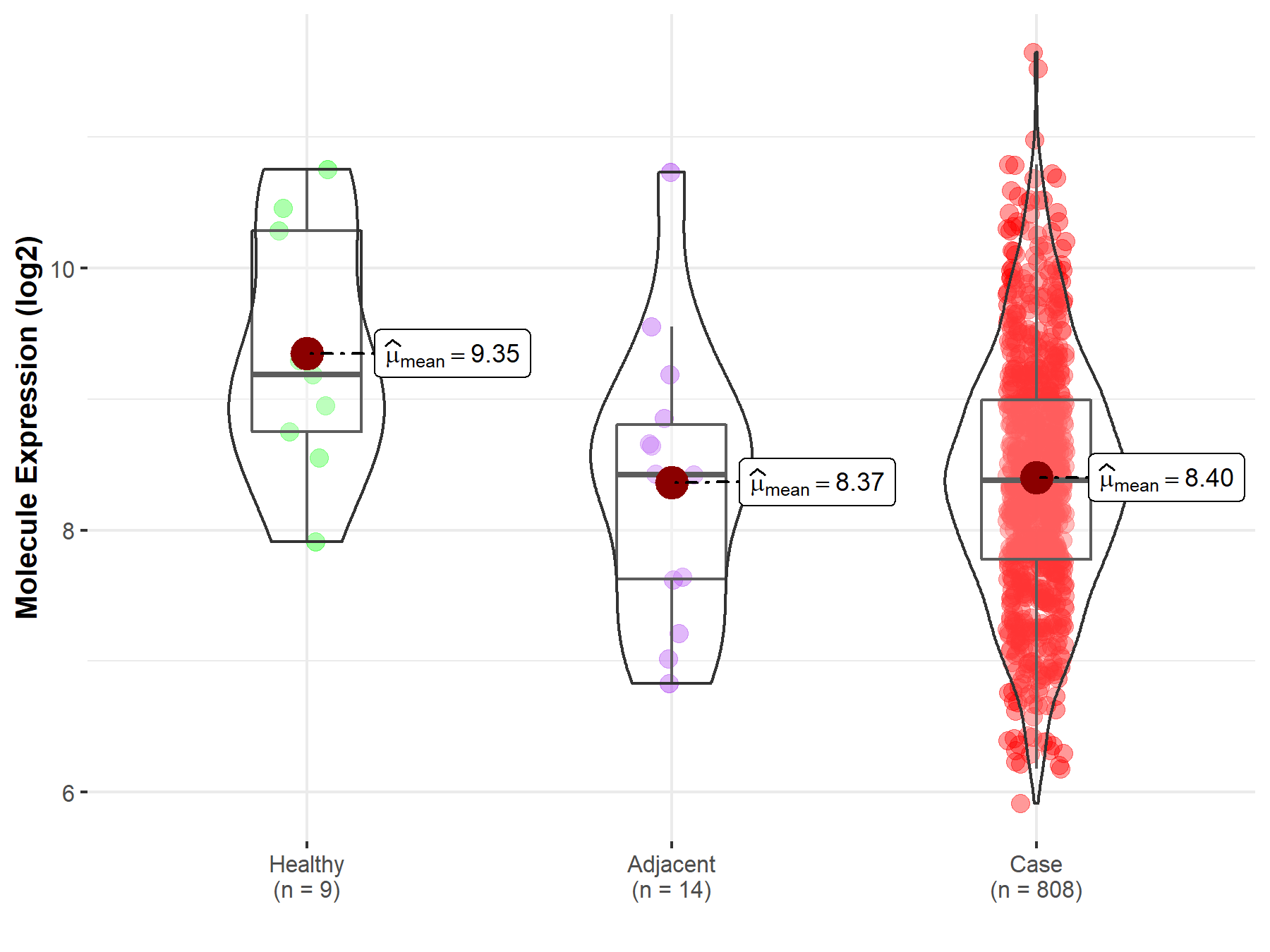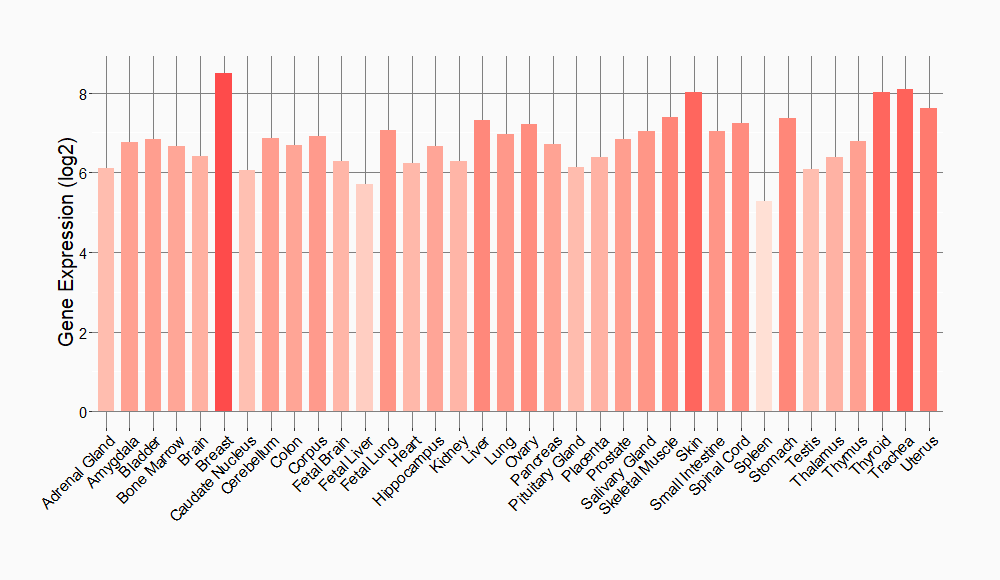Molecule Information
General Information of the Molecule (ID: Mol00103)
| Name |
Transcription factor Jun (JUN)
,Homo sapiens
|
||||
|---|---|---|---|---|---|
| Synonyms |
Activator protein 1; AP1; Proto-oncogene c-Jun; Transcription factor AP-1 subunit Jun; V-jun avian sarcoma virus 17 oncogene homolog; p39
Click to Show/Hide
|
||||
| Molecule Type |
Protein
|
||||
| Gene Name |
JUN
|
||||
| Gene ID | |||||
| Location |
chr1:58776845-58784048[-]
|
||||
| Sequence |
MTAKMETTFYDDALNASFLPSESGPYGYSNPKILKQSMTLNLADPVGSLKPHLRAKNSDL
LTSPDVGLLKLASPELERLIIQSSNGHITTTPTPTQFLCPKNVTDEQEGFAEGFVRALAE LHSQNTLPSVTSAAQPVNGAGMVAPAVASVAGGSGSGGFSASLHSEPPVYANLSNFNPGA LSSGGGAPSYGAAGLAFPAQPQQQQQPPHHLPQQMPVQHPRLQALKEEPQTVPEMPGETP PLSPIDMESQERIKAERKRMRNRIAASKCRKRKLERIARLEEKVKTLKAQNSELASTANM LREQVAQLKQKVMNHVNSGCQLMLTQQLQTF Click to Show/Hide
|
||||
| Function |
Transcription factor that recognizes and binds to the AP-1 consensus motif 5'-TGA[GC]TCA-3'. Heterodimerizes with proteins of the FOS family to form an AP-1 transcription complex, thereby enhancing its DNA binding activity to the AP-1 consensus sequence 5'-TGA[GC]TCA-3' and enhancing its transcriptional activity. Together with FOSB, plays a role in activation-induced cell death of T cells by binding to the AP-1 promoter site of FASLG/CD95L, and inducing its transcription in response to activation of the TCR/CD3 signaling pathway. Promotes activity of NR5A1 when phosphorylated by HIPK3 leading to increased steroidogenic gene expression upon cAMP signaling pathway stimulation. Involved in activated KRAS-mediated transcriptional activation of USP28 in colorectal cancer (CRC) cells. Binds to the USP28 promoter in colorectal cancer (CRC) cells.
Click to Show/Hide
|
||||
| Uniprot ID | |||||
| Ensembl ID | |||||
| HGNC ID | |||||
| Click to Show/Hide the Complete Species Lineage | |||||
Type(s) of Resistant Mechanism of This Molecule
Drug Resistance Data Categorized by Drug
Approved Drug(s)
1 drug(s) in total
| Drug Sensitivity Data Categorized by Their Corresponding Mechanisms | ||||
|
|
||||
| Disease Class: Non-small cell lung cancer | [1] | |||
| Sensitive Disease | Non-small cell lung cancer [ICD-11: 2C25.Y] | |||
| Sensitive Drug | Cisplatin | |||
| Molecule Alteration | Expression | Down-regulation |
||
| Experimental Note | Revealed Based on the Cell Line Data | |||
| Cell Pathway Regulation | c-Jun/BCL-xl signaling pathway | Inhibition | hsa04210 | |
| In Vitro Model | A549 cells | Lung | Homo sapiens (Human) | CVCL_0023 |
| PC9 cells | Lung | Homo sapiens (Human) | CVCL_B260 | |
| In Vivo Model | Nude mouse xenograft model | Mus musculus | ||
| Experiment for Molecule Alteration |
Western blot analysis; Luciferase reporter assay | |||
| Experiment for Drug Resistance |
MTT assay | |||
| Mechanism Description | Overexpression of miR216b sensitizes NSCLC cells to cisplatin-induced apoptosis by decreasing the expression of c-Jun and inhibiting the c-Jun/Bcl-xl pathway. | |||
| Disease Class: Ovarian cancer | [2] | |||
| Sensitive Disease | Ovarian cancer [ICD-11: 2C73.0] | |||
| Sensitive Drug | Cisplatin | |||
| Molecule Alteration | Expression | Down-regulation |
||
| Experimental Note | Revealed Based on the Cell Line Data | |||
| Cell Pathway Regulation | Cell apoptosis | Activation | hsa04210 | |
| Cell viability | Inhibition | hsa05200 | ||
| c-Jun/BCL-xl signaling pathway | Regulation | hsa04210 | ||
| In Vitro Model | SkOV3 cells | Ovary | Homo sapiens (Human) | CVCL_0532 |
| A2780 cells | Ovary | Homo sapiens (Human) | CVCL_0134 | |
| In Vivo Model | BALB/c nude mouse xenograft model | Mus musculus | ||
| Experiment for Molecule Alteration |
Western blot analysis | |||
| Experiment for Drug Resistance |
MTT assay; Flow cytometry assay | |||
| Mechanism Description | Recovery of miR-139-5p suppressed the expression of c-Jun and thus reversed cisplatin-resistance in ovarian cancer. | |||
Clinical Trial Drug(s)
1 drug(s) in total
| Drug Sensitivity Data Categorized by Their Corresponding Mechanisms | ||||
|
|
||||
| Disease Class: Nasopharyngeal carcinoma | [3] | |||
| Sensitive Disease | Nasopharyngeal carcinoma [ICD-11: 2B6B.0] | |||
| Sensitive Drug | Calycosin | |||
| Molecule Alteration | Expression | Down-regulation |
||
| Experimental Note | Revealed Based on the Cell Line Data | |||
| Cell Pathway Regulation | Cell proliferation | Inhibition | hsa05200 | |
| Cell viability | Inhibition | hsa05200 | ||
| TRAF6-related signaling pathway | Regulation | hsa05206 | ||
| In Vitro Model | CNE2 cells | Nasopharynx | Homo sapiens (Human) | CVCL_6889 |
| C666-1 cells | Throat | Homo sapiens (Human) | CVCL_7949 | |
| CNE1 cells | Throat | Homo sapiens (Human) | CVCL_6888 | |
| In Vivo Model | Nude mouse xenograft model | Mus musculus | ||
| Experiment for Molecule Alteration |
Western blot analysis | |||
| Experiment for Drug Resistance |
CCK8 assay; BrdU assay | |||
| Mechanism Description | Calycosin inhibits nasopharyngeal carcinoma cells by downregulating EWSAT1 expression to regulate the TRAF6-related pathways. | |||
Disease- and Tissue-specific Abundances of This Molecule
ICD Disease Classification 02

| Differential expression of molecule in resistant diseases | ||
| The Studied Tissue | Lung | |
| The Specified Disease | Lung cancer | |
| The Expression Level of Disease Section Compare with the Healthy Individual Tissue | p-value: 4.99E-18; Fold-change: -5.46E-01; Z-score: -7.32E-01 | |
| The Expression Level of Disease Section Compare with the Adjacent Tissue | p-value: 3.17E-12; Fold-change: -5.36E-01; Z-score: -6.36E-01 | |
|
Molecule expression in the normal tissue adjacent to the diseased tissue of patients
Molecule expression in the diseased tissue of patients
Molecule expression in the normal tissue of healthy individuals
|
||
| Disease-specific Molecule Abundances |

|
Click to View the Clearer Original Diagram |
| Differential expression of molecule in resistant diseases | ||
| The Studied Tissue | Ovary | |
| The Specified Disease | Ovarian cancer | |
| The Expression Level of Disease Section Compare with the Healthy Individual Tissue | p-value: 1.79E-02; Fold-change: -8.04E-01; Z-score: -8.40E-01 | |
| The Expression Level of Disease Section Compare with the Adjacent Tissue | p-value: 9.03E-01; Fold-change: -4.26E-02; Z-score: -4.00E-02 | |
|
Molecule expression in the normal tissue adjacent to the diseased tissue of patients
Molecule expression in the diseased tissue of patients
Molecule expression in the normal tissue of healthy individuals
|
||
| Disease-specific Molecule Abundances |

|
Click to View the Clearer Original Diagram |
Tissue-specific Molecule Abundances in Healthy Individuals


|
||
References
If you find any error in data or bug in web service, please kindly report it to Dr. Sun and Dr. Zhang.
